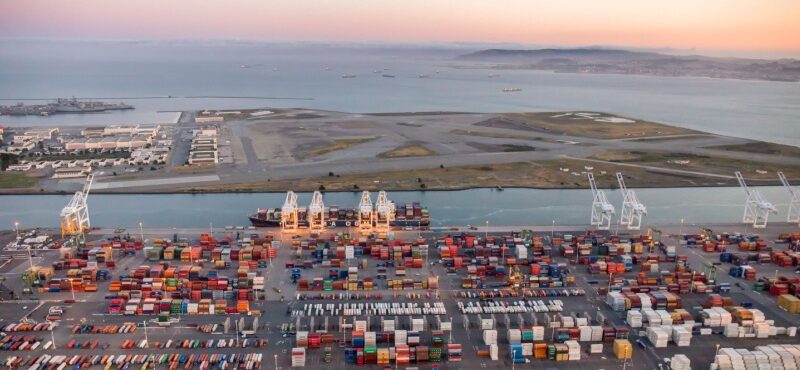Ports are among the most critical hubs of global trade, responsible for the movement of goods, people, and essential resources. However, their vast size, high traffic volume, and exposure to security threats make them vulnerable to theft, smuggling, trespassing, and terrorism. Ensuring port security requires advanced surveillance systems and reliable communication networks to monitor activities in real time and coordinate rapid responses to potential threats.
By integrating video surveillance and wireless communication technologies, ports can strengthen security, improve operational efficiency, and enhance overall safety.
The Challenges of Port Security
Port environments present unique security challenges due to their large geographical footprint, multiple access points, and constant movement of cargo and personnel. Some of the key concerns include:
- Unauthorized Access: Ports require strict access control to prevent unauthorized individuals from entering restricted areas.
- Cargo Theft and Smuggling: Criminal organizations often target shipping containers to steal or smuggle illicit goods.
- Terrorism and Sabotage: Ports are potential targets for security threats that can disrupt global supply chains.
- Workplace Safety Incidents: Accidents involving heavy machinery, cargo handling, and hazardous materials pose risks to workers.
To address these challenges, integrated security solutions combining video surveillance and wireless communication provide a proactive approach to monitoring and response.
The Role of Video Surveillance in Port Security
24/7 Monitoring and Threat Detection: Modern video surveillance systems provide continuous monitoring of port facilities, entry points, docks, and cargo areas. High-definition (HD) and thermal cameras allow security personnel to detect suspicious activities, unauthorized access, or potential threats in real time. AI-powered analytics can automatically identify unusual movements, abandoned cargo, or intrusions, sending alerts to security teams before incidents escalate.
Enhancing Perimeter Security: Surveillance cameras positioned along port perimeters, fences, and gates help deter trespassers and unauthorized personnel. Motion detection cameras and facial recognition technology further enhance perimeter security by identifying individuals and tracking movements.
Incident Investigation and Evidence Collection
When security breaches occur, recorded footage from networked surveillance cameras provides valuable evidence for investigations. Cloud-based video storage allows port authorities to review and analyze footage, improving response strategies and compliance with security regulations.
The Importance of Wireless Communication in Port Operations
Instant Coordination Between Security Teams: Ports are expansive environments where security teams, law enforcement, and emergency responders must communicate quickly. Two-way radios and wireless communication systems ensure instant, real-time coordination, allowing teams to respond to incidents without delays.
Overcoming Network Limitations: Traditional cellular networks may struggle with signal interference in large ports, especially in warehouses, underground facilities, and remote docks. Distributed Antenna Systems (DAS) and radio communication networks ensure uninterrupted connectivity, enabling seamless communication in all areas of the port.
Supporting Emergency Response Efforts: During emergencies, such as fires, hazardous spills, or security breaches, reliable communication is critical for coordinating evacuations, dispatching emergency teams, and alerting authorities. Many modern communication systems include emergency alert buttons and GPS tracking, ensuring a rapid response when needed.
Integration of Video Surveillance and Wireless Communication
Real-Time Incident Management: Integrating video surveillance with wireless communication enhances incident detection and response efficiency. When a security camera detects a breach, the system can automatically send alerts to security personnel via two-way radios or mobile devices, ensuring a coordinated response.
Remote Access and Monitoring: Wireless communication enables port security teams to access surveillance feeds remotely, whether from a control room or a mobile device. This flexibility ensures security personnel can monitor port activities and coordinate responses from anywhere.
Automated Security Alerts: AI-powered surveillance systems can integrate with communication networks to send automated alerts to the appropriate personnel. For example, if a container is tampered with, the system can notify port security immediately, reducing response times and minimizing risks.
The Future of Port Security: Smart Technology and Automation
As ports continue to evolve, emerging technologies will further enhance security operations:
- Artificial Intelligence (AI) and Machine Learning – Improves video analytics, enabling automatic threat detection and response.
- 5G and IoT Connectivity – Enables faster, more reliable communication between security systems, vehicles, and personnel.
- Drone Surveillance – Provides aerial monitoring for hard-to-reach areas and real-time incident tracking.
By integrating these technologies with video surveillance and wireless communication, ports can create a fully connected security infrastructure that adapts to evolving threats.
Strengthening Port Security with Advanced Solutions
In today’s fast-moving global trade environment, port security is essential for ensuring safe, efficient, and secure operations. By leveraging video surveillance and wireless communication technologies, port authorities can enhance monitoring, improve coordination, and respond swiftly to potential threats.
For ports and maritime facilities looking to upgrade their security infrastructure, Highland Wireless provides tailored solutions to meet your specific needs. Contact Highland Wireless now to explore how our video surveillance and communication technologies can help secure your operations and protect valuable assets.

